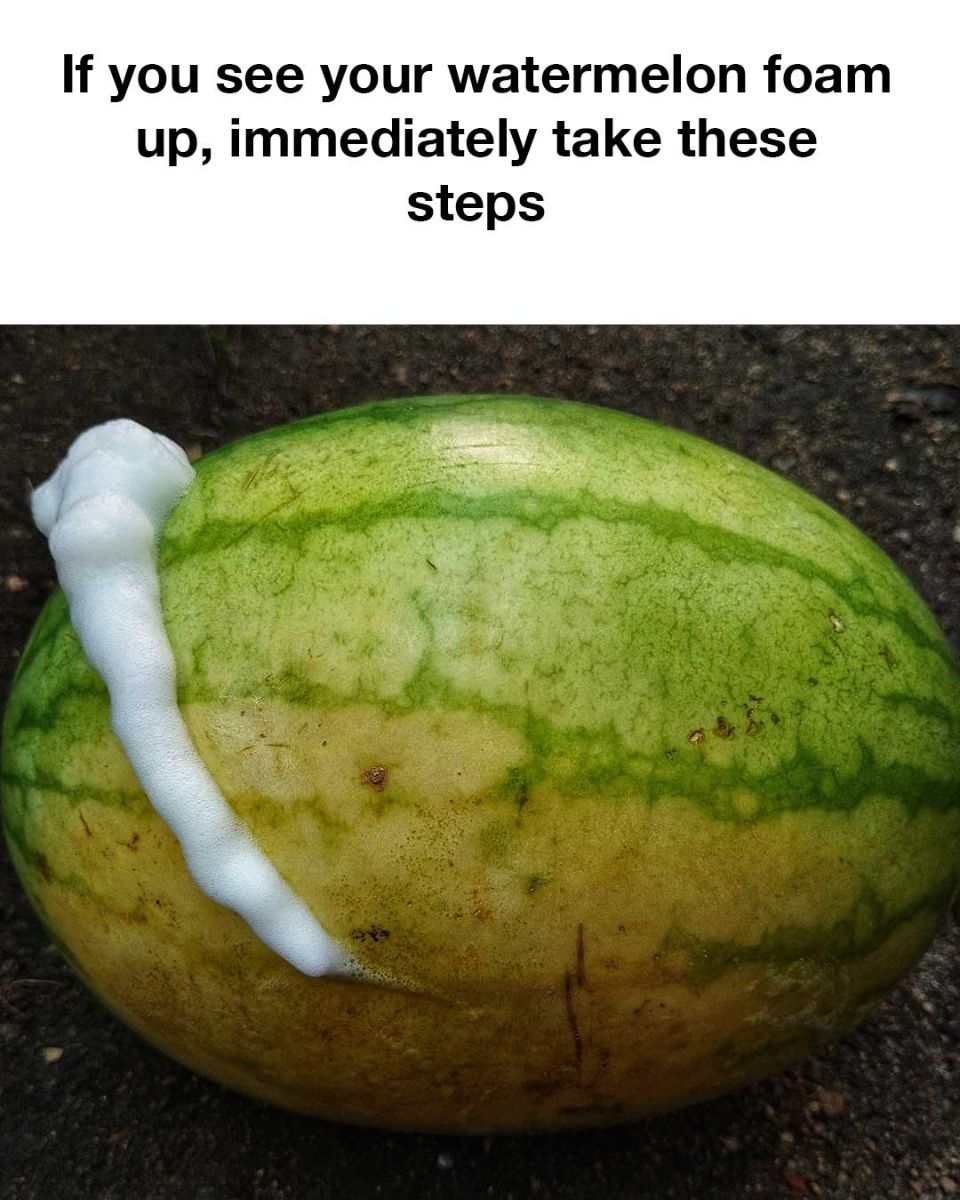Food Poisoning Risk: Fermentation caused by harmful bacteria could lead to foodborne illnesses like nausea, vomiting, diarrhea, and stomach cramps.
Chemical Contamination: If the foaming is a result of chemical reactions (from pesticides or other substances), consuming the watermelon could pose a risk of poisoning.
Physical Hazard: In rare cases, a watermelon that has been fermenting for a while could burst due to the buildup of gas inside, potentially causing injury.
Immediate Steps to Take if Your Watermelon Is Foaming
If you notice your watermelon foaming, follow these steps to ensure your safety:
Do Not Eat It: This is the most important rule—do not consume any part of the foaming watermelon. The foam and even the flesh may be contaminated with harmful bacteria or chemicals.
Isolate the Watermelon: Move the watermelon to a different area away from your kitchen or dining area to prevent any cross-contamination with other food. Place it in a sealed plastic bag or container to contain the foam and prevent further spread.
Dispose of It Safely: Take the foaming watermelon outside and place it in a trash bin that’s far from pets and children. Make sure the trash bin is sealed to keep animals away and avoid spreading any contaminants.
Clean and Disinfect: Clean any surfaces that came into contact with the watermelon using hot, soapy water. Afterward, disinfect those surfaces thoroughly with a cleaning agent that kills bacteria and germs.
Wash Your Hands: Be sure to wash your hands thoroughly with soap and water after handling the foaming watermelon and cleaning the affected areas. This helps prevent any potential spread of contaminants.
Monitor for Illness: If anyone in your household accidentally consumed any part of the foaming watermelon, keep an eye on them for symptoms like stomach pain, nausea, vomiting, or diarrhea. Seek medical attention immediately if any of these symptoms develop.
Report the Incident: If you suspect the foaming was caused by chemical contamination or if other watermelons in your area are showing signs of foaming, consider reporting the issue to your local health department. This could help prevent others from falling ill.
Preventing Watermelon Foaming in the Future
While it’s rare, there are some preventive steps you can take to minimize the risk of encountering a foaming watermelon in the future:
Inspect Before Buying: Look for cracks, punctures, or soft spots when purchasing a watermelon. These can be entry points for bacteria or yeast, which may cause fermentation. Also, avoid overly shiny or sticky watermelons, as this could indicate chemical residue.
Store Properly: Store watermelons in a cool, dry place. Avoid leaving them in direct sunlight or warm areas for extended periods of time. If you’ve cut the watermelon, store any unused portions in the fridge in a sealed container.
Wash the Rind: Before cutting into a watermelon, wash the rind thoroughly with water. This will help remove any dirt, bacteria, or chemical residues that may be on the surface.
Consume Promptly: Once you’ve cut the watermelon, eat it within a few days. The longer cut fruit sits, the higher the risk of bacterial growth and fermentation.
Conclusion
Seeing a watermelon foam can be a shocking experience, but it’s important to remember that this indicates potential health risks. Whether caused by bacterial fermentation or chemical reactions, a foaming watermelon could lead to food poisoning, chemical exposure, or even injury if it bursts. By following the proper precautions—avoiding consumption, isolating the fruit, and cleaning thoroughly—you can protect yourself and your family from any harm.
If in doubt, always err on the side of caution and dispose of the fruit. Your safety is worth far more than risking a slice of foamy watermelon!

